Explore how AI and machine learning are transforming credit scoring, the risks of algorithmic bias, and practical strategies for fair, transparent, and compliant lending.
The integration of Artificial Intelligence (AI) and Machine Learning (ML) has brought significant changes to credit underwriting. It is enabling financial institutions to shift from fixed, rule-based systems to smarter, predictive models.
This technological shift promises enhanced predictive accuracy, significant operational efficiency gains, and the potential for greater financial inclusion by offering credit to traditionally underserved populations. However, this transition introduces a critical ethical and regulatory challenge known as algorithmic bias.
AI models, when designed without rigorous oversight, risk perpetuating or amplifying historical discrimination, leading to unfair outcomes for applicants based on protected characteristics like race or gender.
For banks and financial institutions operating in the highly regulated US market, complexity and opacity are not a defense against fair lending violations. Federal regulators scrutinize the deployment of AI. Therefore, building ethical AI in lending needs a clear, step-by-step plan that balances high model performance with strong fairness and regulatory compliance.
The Dual Risk of Opaque Models and Inherited Discrimination
To effectively mitigate bias, financial institutions must first understand where it originates and how it manifests within modern credit scoring systems.
1. The Legacy of Historical Bias in Credit Data
The foundational source of bias is the training data itself. AI models learn from historical financial data which reflects decades of economic and social inequities. If the data is biased, the algorithm learns to replicate these discriminatory patterns at scale. For instance,
- Training models on historical lending data, which may encode practices like redlining, will cause the AI to associate geography with risk, inadvertently perpetuating discrimination. This is referred to as historical bias.
- Similarly, models may show bias if the training data is not representative of the population the model is intended to serve. This is particularly challenging in credit scoring, where millions of borrowers are “credit invisible” or have thin files and are systematically underrepresented in traditional financial records.
2. The Problem of Proxy Variables in AI Credit Scoring
The most insidious form of bias is proxy discrimination. While fair lending laws prohibit the use of protected attributes (like race or gender) directly, AI models are highly adept at identifying seemingly neutral data points that are strongly correlated with those attributes. Simply removing the race or gender column from a dataset is an insufficient action to ensure fairness.
Proxy variables identified in research include factors such as geographic data (e.g., zip codes), behavioral data (e.g., online shopping habits or even text formatting), and Digital footprints (e.g., the type of device used, like iPhone vs. Android).
A key insight from bias auditing is that the model optimizes predictive performance by sometimes exploiting these correlations, indirectly penalizing protected groups.
3. The Black Box Problem
The adoption of sophisticated AI models, such as neural networks or gradient boosting machines (e.g., XGBoost), introduces the “black box” problem. These complex algorithms produce superior accuracy but often lack transparency in explaining how they arrive at a decision. This opacity creates major difficulties for accountability, consumer trust, and—critically—regulatory compliance.
The Three Pillars of Bias Mitigation
Bias mitigation efforts must be integrated across the entire machine learning pipeline, grouped into three strategic categories, pre-processing, in-processing, and post-processing.
1. Pre-Processing to Eliminating Bias at the Data Level
These strategies target bias within the training dataset before the model sees the data.
This technique adjusts the weight assigned to individual samples in the training data to ensure that underrepresented demographic groups are adequately balanced. This aims to align the input data with fairness objectives. This helps improve data quality and representation.
Similarly, leveraging alternative data (such as rental payments, utility bills, or transaction history) provides a more comprehensive view of creditworthiness, especially for those with thin credit files. As a result, it helps promoting inclusion and reducing bias stemming from limited conventional data. However, institutions must use this alternative data with caution and rigorously validate it to ensure new biases are not inadvertently introduced.
2. In-Processing to Build Fairness into Model Training
In-processing methods incorporate fairness metrics directly into the learning objective or algorithm design.
- Advanced ML Architecture
To maximize prediction accuracy while maintaining efficiency, advanced algorithms are essential. For example, a US-based commercial lender achieved US$ 400,000 in annualized cost savings after implementing an optimized credit scoring model based on Extreme Gradient Boosting (XGBoost), random forest, and regression analysis. Using such powerful ML techniques requires integrating fairness during model training. - Adversarial Debiasing
This advanced technique employs two models training simultaneously, includes a primary predictor and an “adversary” model.
The primary model is penalized if the adversary is able to accurately predict the protected attribute from the primary model’s outputs. This forces the predictor to learn representations that inherently minimize information related to sensitive attributes. - Fairness Constraints and Regularization
This involves modifying the model’s objective function (loss function) to penalize unfair outcomes, thereby inducing an intrinsically fair model.
This often involves applying constraints to maximize accuracy while simultaneously ensuring predetermined fairness metrics (like equal opportunity) are met.
3. Post-Processing to Correct Bias in Model Output
Post-processing involves modifying the model’s final decision outputs to satisfy specific fairness definitions. This method applies different approval or denial thresholds to different demographic groups based on the model’s risk score. This is practical because it is “model-agnostic,” meaning it can be applied to complex black-box models without altering the underlying algorithm, simply by adjusting the final decision cutoffs.
Research shows that such fairness constraints can significantly reduce bias (e.g., DPD reduction from 0.23 to 0.07 in one study) with only minimal performance degradation.
Governance and Compliance: Building Trustworthy AI in the US
Technical mitigation must be paired with robust organizational governance, particularly given the regulatory environment in the US.
1. Explainability (XAI) as a Compliance Pillar
The opacity of AI models poses a direct compliance risk regarding consumer rights. The Equal Credit Opportunity Act (ECOA) and the Fair Credit Reporting Act (FCRA) mandate that creditors must provide clear, specific, and accurate reasons for any adverse credit decision. Complex algorithms or pointing to a “broad bucket” of reasons is not permissible.
Explainable AI (XAI) addresses this by providing transparency into model mechanisms. Additionally, SHAP and LIME values are critical interpretability-enhancing methods that dissect black-box decisions. These tools isolate and rank the most determinative factors contributing to a credit denial, enabling the financial institution to generate the necessary clear rationales required by regulators.
For instance, Anaptyss has developed predictive models for US commercial lenders that forecast the probability of delinquent accounts with approximately 93% accuracy. A key component of this solution was the provision of objective rationale for credit decisions and the advocacy of Explainable AI, respecting interpretability alongside model accuracy
2. Proactive Bias Auditing and Continuous Monitoring
Fairness is not a one-time achievement. It’s a continuous process, which demands continuous diligence. Financial institutions must adopt structured bias auditing protocols covering the entire machine learning lifecycle.
Audits must quantify bias using established metrics such as Demographic Parity Difference (DPD) (which measures equal distribution of outcomes across groups) and Equal Opportunity Difference (EOD) (which compares true positive rates across groups).
US regulators explicitly push creditors to proactively search for and implement Less Discriminatory Alternatives (LDAs) to mitigate disparate impact. Examiners may search for these alternatives if institutions fail to do so.
Effective AI governance also requires interdisciplinary teams composed of data scientists, legal counsel, compliance officers, risk managers, and ethicists to rigorously evaluate models and vet third-party AI systems for compliance risks. Anaptyss successfully completed a project for a US-based commercial lender that required the validation of third-party credit risk scorecards (including FICO, Dun & Bradstreet, Experian, and PayNet) to ensure compliance with prevalent regulatory standards. This validation was achieved 40% faster using machine learning solution, resulting in 100% compliant credit risk models and reduced risk of regulatory penalties.
Conclusion
The wholesale migration to AI-driven credit scoring is inevitable, fueled by the ability of these technologies to analyze vast and diverse datasets, enhance predictive accuracy, and streamline decision-making. However, this future hinges on the financial industry’s commitment to prioritizing fairness and ethical accountability.
Anaptyss delivers managed services that combine regulatory compliance and risk management with advanced AI and machine learning for banks and financial institutions. We help co-create, deploy, and monitor AI credit scoring models that meet strict US Fair Lending standards, ensuring Explainable AI (XAI) readiness and continuous bias auditing.
Our success stories demonstrate our ability to deliver highly accurate predictive models that explicitly include the provision of objective rationale for credit decisions and advocacy of Explainable AI (XAI). Furthermore, we specialize in the independent validation and auditing of complex models for regulatory compliance and demographic bias, helping clients achieve 100% compliant credit risk models.
To discuss how we can help your institution implement an ethical AI governance framework and proactively mitigate algorithmic bias, reach use at info@anaptyss.com.



